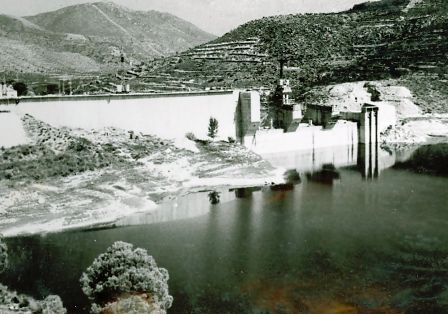History
Beniarrés, Benafarrez, Benarraes, Benares, Beniarraez … so has been and is known the place settled on a small hill at the entrance of the Vall de Perpuchent. The human presence develops in these lands from the Prehistory, being the Cova de l’Or the symbol more emblematic; but it is from the 5 of April of 1259 when it appears the first written documentation, stating the existence of a defensive tower and around the same a few houses. Although geographically it belongs to the Vall de Perpuchent, it is under the dominion of the Lord of Plans. In 1273, Mrs. Teresa Gil de Vidaura, Mrs. de Planes y Travadell, sells the farm of Beniraehç to Ramon de Riusec, lord of Perpuchent. Soon after, already incorporated to the Valley, concretely the 25 of April of 1275, a Charter Puebla is granted to ten Christian residents. That same year, Beniarrés passed into the hands of Arnaldo de Romaní, and shortly afterwards his son of the same name belonging to the Order of San Juan del Hospital. The 17 of July of 1317, when creating the Military Order of Our Lady of Montesa absorbing the goods of the one of San Juan of the Hospital and the one of the Temple, Beniarrés is incorporated to her, taking possession of the Valley the 1 of March of 1320. his tutelage will be until the dissolution of the señoríos in the middle of the XIX. Only 100 years after the first Puebla letter of 1275, there were no Christians remaining in Beniarrés and all the inhabitants were Moorish, who continued to cultivate the fields and tended their livestock until their expulsion in 1609. From that moment, difficulty, with families coming from the Huerta de Alicante, the valleys of Albaida, Onteniente, Guadalest and neighboring places.
Many are the historical vicissitudes and the problems derived from the climatology and the cultivation of the land, since this is mostly dry land, producing wheat, grapes, olives, almonds and mulberry leaves, which served as the basis for a flourishing industry until the 19th century. It was in 1748, as a consequence of the earthquakes, that the providential devotion of Frey Joseph Vilaplana was given, who was able to instil in all the inhabitants of this town the devotion to the Virgin of the Holy Cave, naming her Patroness and Protector of the Place. With the decline of the silk industry in the 19th century, the neighbors of Beniarrés promote olive cultivation by building huge stone terraces on the slopes of the mountains, reaching the fame of the quality of their oil. With the coming of the railroad, the electric light and the telegraph, a resurgence of the modernity that propels the unstoppable future of Beniarrés is possible. The construction of the Pantanal of Beniarrés in the central years of the 20th century was a great impact, attracting many families from other places to live in the town. Although important still, agriculture moves to second place and its inhabitants opt for new ways of making a living in order to face the future.


